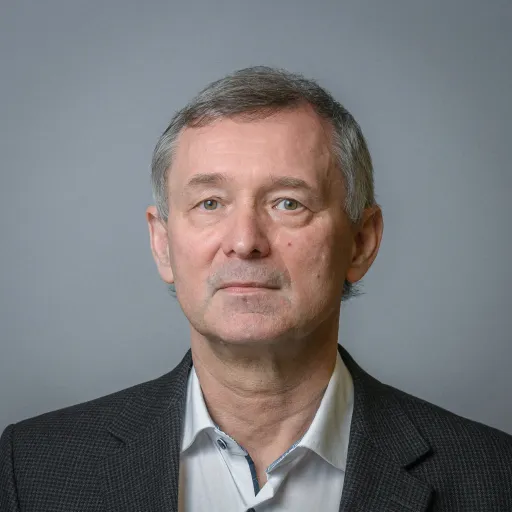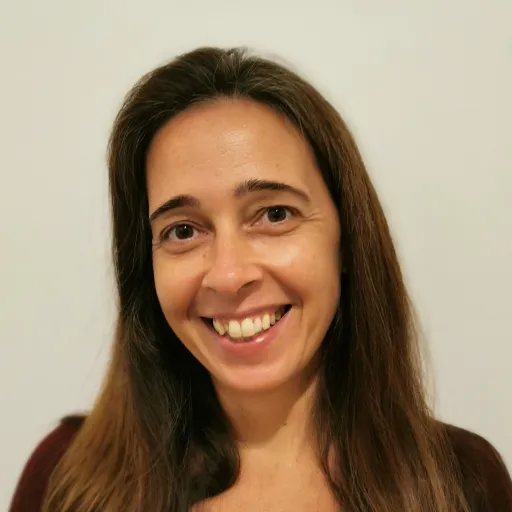
Machine Perception Research Laboratory
Competences
Machine Perception and Interaction
Enabling machines to understand and interact with the physical world.
Key Staff
Research Areas and Professional Activities
- Methodological Research
- Environmental perception for autonomous vehicles and mobile robots
- Fusion of different sensing modalities
- Upscaling and compressing LIDAR data
- Research, development, and practical application of machine learning methods
- Applications
- Object detection and tracking using camera, radar, and LIDAR data
- Change detection in terrestrial, aerial, and remote sensing data
- Mapping and monitoring using combined terrestrial and aerial robotics
- Supporting biodiversity and environmental modeling research through remote sensing data
- Recognition and tracking of biometric features (e.g., motion and gestures)
- Medical image processing
- Dissemination and Education
- Science communication (popular science lectures, Researchers’ Night, AI Summit, AI Symposium)
- Education and talent development (BME, PPKE)
- Supervising PhD, thesis, and professional internship projects
Research Projects
- Distinguishing unmanned aerial vehicles (UAVs) from birds and other flying objects (AFOSR)
- Site analysis and reconstruction based on incomplete spatial data (OTKA)
- Effective environmental sensing and reconstruction: Simplifying and compressing point clouds while preserving relevant information (NKKP)
- Distributed sensor systems: Semantic and geometric modeling (OTKA)
Innovation Projects
- PROACTIF - Unmanned Vehicles for Civil Security and Surveillance Missions (EU Chips Act, 2025–2028)
- B-Prepared (EU Horizon Europe, 2023–2026)
- ADSIL - Autonomous driving systems with innovative camera-LIDAR integration (EUREKA XECS, 2025–2027)
- AI based Fusion of Satellite/Airborne data for Biodiversity Change Characterization (European Space Agency, ESA, 2023–2025)
- OWETIS Observation of local Wetland areas from Satellite Imaging (European Space Agency, ESA, 2016–2018)
- MAPIS - Multichannel passive ISAR imaging for military applications (European Defense Agency, EDA, 2014–2017)
- Small UAV detection and tracking (2022–2023)
- Road defect detection (2023–2024)
- Optical waste sorting development (2017–2018)
- Machine perception algorithms for self-driving vehicles (2017–2018)
Selected Publications
- Kovács, L., & Bódis, B. M., & Benedek, C. (2024). LidPose: Real-Time 3D human pose estimation in sparse Lidar point clouds with non-repetitive circ scanning pattern. Sensors, 24(11), Article 3427, 25 pages. https://doi.org/10.3390/s24113427
- Keszler, A., & Tuza, Z. (2024). Spectrum of 3-uniform 6- and 9-cycle systems over K(3)v − I. Discrete Mathematics, 347(3), Article 113782, 10 pages. https://doi.org/10.1016/j.disc.2023.113782
- Rózsa, Z., & Szirányi, T. (2023). Optical flow and expansion based deep temporal up-sampling of LIDAR point clouds. Remote Sensing, 15(10), Article 2487, 19 pages. https://doi.org/10.3390/rs15102487
- Ibrahim, Y., & Benedek, C. (2023). MVPCC-Net: Multi-view based point cloud completion network for MLS data. Image and Vision Computing, 134, Article 104675, 13 pages. https://doi.org/10.1016/j.imavis.2023.104675
- Zováthi, Ö., & Pálffy, B., & Jankó, Z., & Benedek, C. (2023). ST-DepthNet: A spatio-temporal deep network for depth completion using a single non-repetitive circular scanning Lidar. IEEE Robotics and Automation Letters, 8(6), 3270–3277, 8 pages. https://doi.org/10.1109/LRA.2023.3266670
- Rózsa, Z., & Golarits, M., & Szirányi, T. (2022). Immediate vehicle movement estimation and 3D reconstruction for mono cameras by utilizing epipolar geometry and direction prior. IEEE Transactions on Intelligent Transportation Systems, 23(12), 23548–23558, 11 pages. https://doi.org/10.1109/TITS.2022.3199046
- Barath, D., & Matas, J. (2022). Graph-Cut RANSAC: Local optimization on spatially coherent structures. IEEE Transactions on Pattern Analysis and Machine Intelligence, 44(9), 4961–4974, 14 pages. https://doi.org/10.1109/TPAMI.2021.3071812
- Barath, D., & Noskova, J., & Matas, J. (2022). Marginalizing sample consensus. IEEE Transactions on Pattern Analysis and Machine Intelligence, 44(11), 8420–8432, 13 pages. https://doi.org/10.1109/TPAMI.2021.3103562
- Göncz, L., & Majdik, A. (2022). Object-based change detection algorithm with a spatial AI stereo camera. Sensors, 22(17), Article 6342, 16 pages. https://doi.org/10.3390/s22176342
- Liu, C., & Szirányi, T. (2022). Road condition detection and emergency rescue recognition using on-board UAV in the wilderness. Remote Sensing, 14(17), Article 4355, 27 pages. https://doi.org/10.3390/rs14174355
- Zováthi, Ö., & Nagy, B., & Benedek, C. (2022). Point cloud registration and change detection in urban environment using an onboard Lidar sensor and MLS reference data. International Journal of Applied Earth Observation and Geoinformation, 110, Article 102767, 13 pages. https://doi.org/10.1016/j.jag.2022.102767
Patents
Awarded
- Benedek, Csaba, Csetverikov, Dmitrij, Jankó, Zsolt, Szirányi, Tamás, Börcs, Attila, Józsa, Oszkár, & Eichhardt, Iván. Method and system for generating a three-dimensional model. US10163256B2. USA. https://patents.google.com/patent/US10163256B2/en
- Szirányi, Tamás, & Szolgay, Dániel. Method for decomposing an image consisting of pixels to cartoon image and/or texture image. WO/2013/088183. Switzerland, Germany, UK, Hungary. https://patentscope.wipo.int/search/en/WO2013088183
Submitted
- Benedek, Csaba, Csetverikov, Dmitrij, Jankó, Zsolt, Szirányi, Tamás, Börcs, Attila, Józsa, Oszkár, & Eichhardt, Iván. Method and system for generating a three-dimensional model. Application: EU. https://patentscope.wipo.int/search/en/detail.jsf?docId=EP160579456
- Bugár-Mészáros, Barnabás, Majdik, András, Rózsa, Zoltán, & Szirányi, Tamás. Method and system for generating a radiation plan. Applications: EP, WO, US.
https://patentscope.wipo.int/search/en/detail.jsf?docId=US444089616&_fid=WO2023007198 - Nagy, Balázs, Kovács, Lóránt, Benedek, Csaba, Szirányi, Tamás, Zováthi, H. Örkény, & Tizedes, László. Training method for training a change detection system, training set generating method therefor, and change detection system. WO/2023/007198. https://patentscope.wipo.int/search/en/detail.jsf?docId=WO2023007198&_cid=P12-LDSTMY-76609-1
- Benedek, Csaba, Szirányi, Tamás, Zováthi, H. Örkény, Jankó, Zsolt, Kégl, Marcell, Kovács, Lóránt, Pállfy, Balázs, Rózsa, Zoltán, & Kövendi, József. Method and system for depth completion. PCT/HU2024/050016. https://patentscope.wipo.int/search/en/detail.jsf?docId=WO2024180357
- Balla, Krisztián, Keszler, Anita, Majdik, András, Szirányi, Tamás, & Gazdag, Sándor. Detection and classification of small-sized UAVs and birds in sparse LIDAR point cloud. P2400517.



